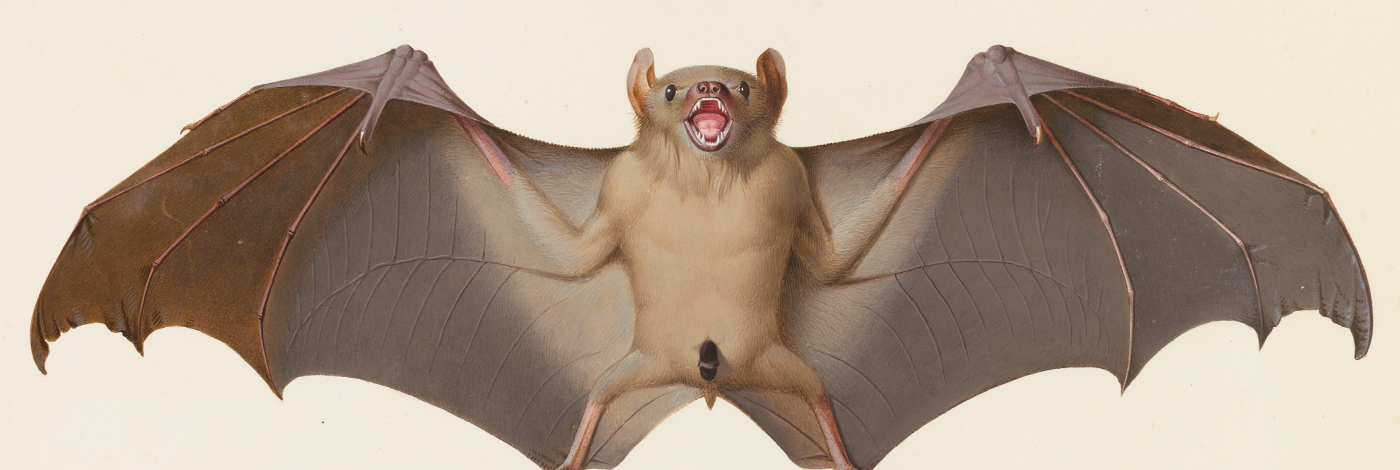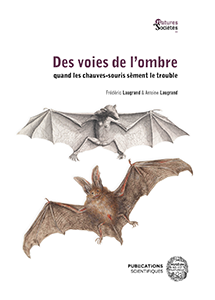
 Volume 8
Volume 8 Published on 31 December 2023
How do humans and chiropterans form communities? On a global scale, bats generate ambivalent feelings. They stimulate the imagination, and humans interact with them in a multitude of ways. They inspire myths. They defy classification. Their sexuality intrigues, and they raise the question of gender in unprecedented ways. They fuel technology and biomimicry. Their skills and sensitivity have been observed by many human communities, who mobilize them to move around, anticipate typhoons, etc. Their flesh is either appreciated or excluded from diets. They occupy a place of choice in the pharmacopeia. Stealthy and invisible, nocturnal and discreet, witchcraft calls on them. They embody spirits and divinities. They enter into clan kinship as ancestral figures. They are sometimes represented as allies bringing good fortune or enemies to be kept at a distance or in “the wild.” They are at the heart of initiation practices or sacrificial rituals. Although they have survived for millions of years, several species are now threatened with extinction. Bats sound the alarm at a time when humans are no longer respecting their surroundings and destroying the environment. Able to contain the most dangerous viruses thanks to their exceptional immune system, they excrete them in situations of stress. Accused here of the worst evils, they are admired there for their ecological action as defenders of biodiversity. They participate in pollination, reforestation, and insect pest control. Chiropterans sow trouble, which this book explores from a variety of perspectives.
Frédéric Laugrand is Professor of Anthropology at UcLouvain and Director of the Laboratoire d'anthropologie prospective. His research focuses on Indigenous cosmologies in Canada and Austronesia, orality and the transfer of knowledge, hunting and interspecific relations. His publications include: with J. Oosten, Hunters, predators and prey. Inuit perceptions of animals (Berghahn Books, 2014), with C. Buijs and K. van Dam (eds.), People, Places, and Practices in the Arctic (Routledge, 2023) and about 45 volumes edited with Indigenous colleagues on Inuit traditions (https://nacmedia.ca/books/page/5), and blaan, ibaloy, and alangan traditions of the Philippines (https://pul.uclouvain.be/collection/?collection_ID=116).
Antoine Laugrand holds a PhD in Anthropology (UCLouvain, Belgium). His research examines indigenous peoples' relationships to territory and the state in the Philippines, and compares systems of occupation, possession and appropriation of land. With anthropologists and indigenous people, he has co-edited a 22-volume Verbatim series, and co-published a series of articles on the relationships to horses, pigs, birds, snakes and bats among the Blaan, Alangan and Ibaloy peoples. His monograph Des nomades à l'arrêt was published by Academia in 2021.
Laugrand Frédéric & Laugrand Antoine 2023 — Des voies de l’ombre : quand les chauves-souris sèment le trouble. Paris : Muséum national d'Histoire naturelle, 518 p. (Natures en sociétés ; 8).

Version proposée :
fichiers ePub et PDF
Langue : Français
155 figures